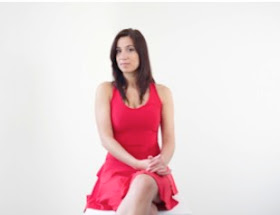In this article I want to have a quick look at Augmented Reality and what potential it holds for the future of English language teaching.
What’s Augmented Reality?
Basically, augmented reality can be defined as the interweaving of virtual Internet based materials with or physical reality. This still sounds a bit vague, so let me take this a step further. Virtual reality works with the aid of GPS (Global Positioning System) type mobile devices which are able to accurately track your physical location and they deliver to your mobile device information from the Internet which is specific to that location.
By specific to that location, I don’t mean that if you are in London you get information about London. It’s much more specific than that. You can be tracked through your mobile device to the exact square metre on which you are standing and the information can be delivered about exactly what, or potentially who you are looking at from moment to moment.
You can see a simple video explaining augmented reality here:
Augmented Reality
Most virtual reality applications at the moment are being delivered through mobile phones with cameras on, so when you hold up your mobile phone and point the camera in any direction you can see information about the things around you on your phone screen and click on the screen to get more information.
One marvelous example of how this can be applied is a free virtual reality App for the iPhone called
Streetmuseum which has been developed by The Museum of London. It enables users walking around the streets of London to hold up their phone and get a 2D or even 3D image overlay of what that street would have looked like at some point during history.
Augmented reality in 3D can also be applied to books. You can experience this on your computer now if you have a web cam and a printer. Just follow this link to Ecomagination at
http://ge.ecomagination.com, print up a simple piece of paper and follow the instructions. You’ll see a 3D animated model with sound and movements that you can actually interact with appear in front of you on your screen.

Think about how this simple piece of paper if applied to the pages of a book, could transform the experience of reading and the relationship of text to images.
How will Augmented Reality impact on teaching and learning?
- It means that we can take learning out of the classroom and deliver it to exactly where and when students need it. 3D interactive learning materials can be delivered to students on the spot at the supermarket, train station, bank whenever they need it just through an app in their mobile phone camera.
- Not only this but the ability of GPS to accurately track location means that you can track other users of the same app, so that if you walked into a room full of people anywhere in the world and held up your camera you would be able to see information about those people, find out which were teachers or learners of English and have your face to face lesson, or peer to peer study group with anyone and anywhere you happened to be when you had the time.
So virtual reality applications have the potential to transform our social and learning reality. They have the potential to transform the way we read and interact with text. They have the potential to transform the way and the places where we teach and the relationship between teachers and learners.
Is this something we want? Do we want to be tracked by the Internet where ever we go? Well the fact is, that if you have a GPS enabled mobile device with you right now and it’s switched on, then this is already happening to you.
As for how we as teachers deal with this and the uses it’s put to in education, that still remains to be seen, but this is happening now and we need to be aware of and start thinking about how we want this to impact on our lives and work.
Related links:Best
Nik Peachey
 The library is very easy to navigate, just click on the book you want. You can personalise the books my selecting the names of the characters in the book, though you have to register to save these, or just read through by clicking on the button to read and clicking to turn pages.
The library is very easy to navigate, just click on the book you want. You can personalise the books my selecting the names of the characters in the book, though you have to register to save these, or just read through by clicking on the button to read and clicking to turn pages.
 This is a great site to help younger learners with their reading. the stories are ones that will probably be familiar from their L1 anyway and this combined with the audio support and word highlighting should really help not only with their reading but also their listening skills and pronunciation.
This is a great site to help younger learners with their reading. the stories are ones that will probably be familiar from their L1 anyway and this combined with the audio support and word highlighting should really help not only with their reading but also their listening skills and pronunciation.









